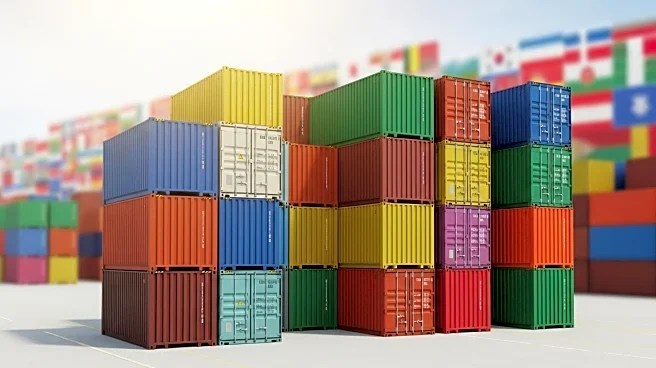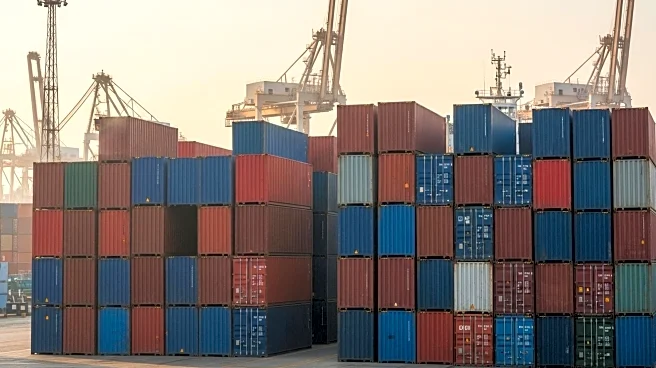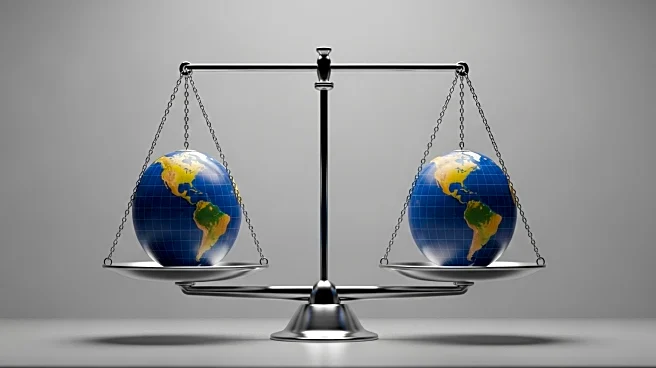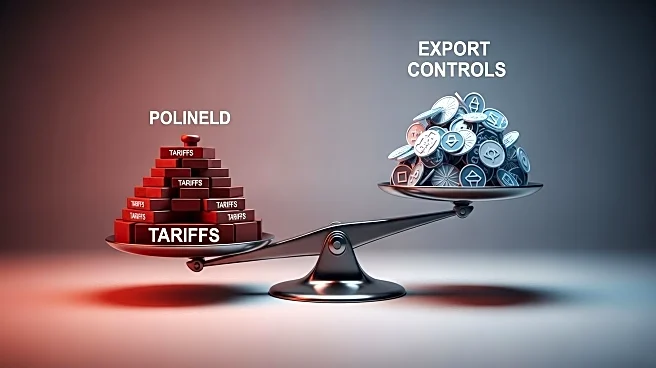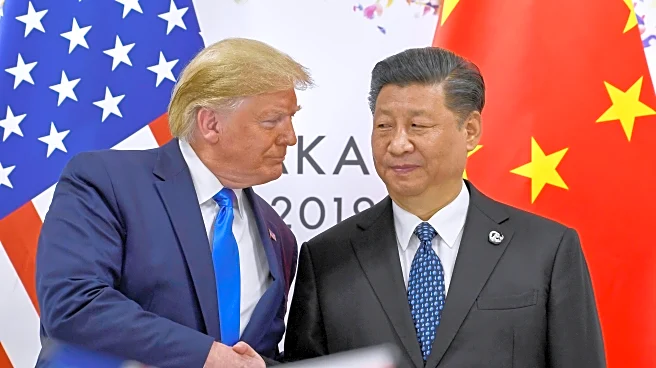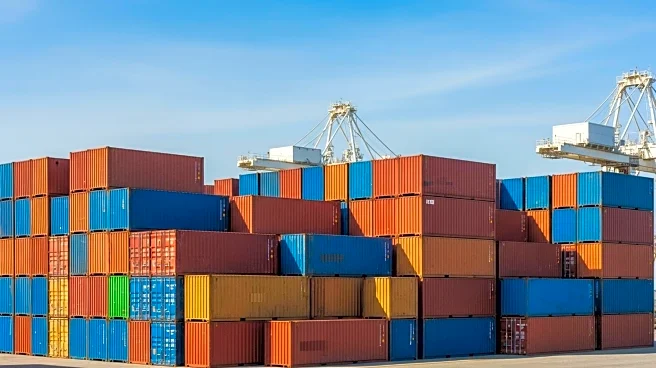What's Happening?
China's exports to the United States decreased by 27% in September compared to the previous year, despite a significant increase in global exports. According to customs figures, China's worldwide exports rose by 8.3% year-on-year, reaching $328.5 billion, surpassing economists' expectations. This growth marks a notable improvement from the 4.4% increase in August. Imports also saw a substantial rise of 7.4% last month, although domestic economic challenges, including a real estate sector downturn, continue to affect demand. The decline in exports to the U.S. has persisted for six consecutive months, with a 33% drop in August. The trade relationship between China and the U.S. remains strained, as new tariffs and retaliatory measures are introduced by both sides. China is diversifying its export markets, with shipments to Southeast Asia, Latin America, and Africa showing significant growth.
Why It's Important?
The shift in China's export strategy highlights the ongoing trade tensions with the United States, exacerbated by policies from President Trump aimed at encouraging manufacturers to relocate to America. This situation underscores the broader geopolitical and economic challenges facing global trade. As China expands its markets in other regions, it demonstrates resilience in maintaining export growth despite higher tariffs. The diversification of export destinations may mitigate some impacts of the U.S.-China trade conflict, but the introduction of export controls and additional tariffs could further complicate international supply chains. The potential escalation of these measures poses risks to global economic stability and could affect industries reliant on Chinese goods.
What's Next?
The trade tensions between China and the U.S. could impact plans for a meeting between President Trump and Chinese President Xi Jinping scheduled for late October. The lack of progress in reaching a comprehensive trade agreement between the two largest economies suggests continued uncertainty. Both countries have introduced new tariffs and export controls, which may lead to further retaliatory actions. The situation requires careful monitoring as it could influence global trade dynamics and economic policies. Stakeholders, including businesses and policymakers, will need to navigate these complexities to minimize disruptions and explore alternative trade partnerships.
Beyond the Headlines
The ongoing trade conflict between China and the U.S. raises ethical and legal questions regarding international trade practices and the use of tariffs as a political tool. The impact on global supply chains and the potential for prolonged economic instability highlight the need for diplomatic solutions. The situation also reflects broader cultural and economic shifts, as countries reassess their trade dependencies and explore new alliances. Long-term implications may include changes in manufacturing locations, investment strategies, and the balance of economic power.
